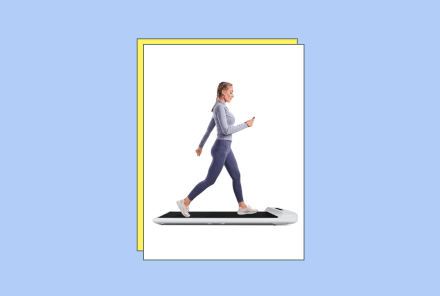Advertisement
The Best Exercises For Managing Heart Disease, According To Research


Getting regular exercise is undoubtedly one of the most important factors of a well-rounded routine, and that's true for people with heart disease, too. But due to the risk of certain exercises and activities, many heart patients may be unsure which they can safely do.
In newly released recommendations from the European Society of Cardiology (ESC), the team offers guidelines on which sports and physical activities are best for people with heart disease and other related illnesses.
How much should people with heart disease exercise?
First and foremost, the ESC recommends that people with heart disease should try to move every day—not unlike a healthy adult without heart disease. They advise a target of at least 150 minutes per week of moderate-intensity exercise.
Moderate intensity means your heart rate goes up around 50 to 60%, but you can still hold a conversation. (Think tennis or hiking, for example.)
Which kinds of exercise are best?
Depending on what kind of heart condition a person has, the guidelines note strength training, such as lifting light weights, is a good option for people who are obese, have diabetes, or have high blood pressure. Couple that a few times a week, along with moderate to intense aerobic exercise a few times a week.
"People with long-standing coronary artery disease who wish to take up exercise for the first time should see their doctor first," adds Antonio Pelliccia Ph.D., who worked on these guidelines. "The aim is to tailor the intensity of activity according to the individual risk of causing an acute event such as a heart attack."
Those with atrial fibrillation (the most common heart rhythm disorder) taking anticoagulants should not play contact sports, but other options are fine. The same goes for people with pacemakers.
Here are some other examples of recommended exercises:
- brisk walking
- dancing
- biking
- yoga
- swimming
- gardening
- golfing
- kayaking or canoeing
- light weightlifting
- qigong
The takeaway.
Everyone needs to get physical activity in one way or another, and if you've struggled with heart issues, that's all the more reason to prioritize it. "Physical activity is good for everyone with heart disease and even small amounts are beneficial," notes Sanjay Sharma, M.D., who worked on the guidelines, in a news release. "We hope these guidelines will help patients and their health professionals choose the best and most enjoyable activities for them."
And while the risk of triggering a heart attack or cardiac arrest while exercising is "extremely low," according to Sharma, it's never a bad idea to talk to a doctor before trying a new type of workout, especially for anyone who is completely inactive or has advanced heart disease.
If exercising causes anything like heart palpitations, chest discomfort, or "unusual shortness of breath," Pelliccia says you'll want to ease up on the intensity of your workout and let your doctor know about it. If you experience chest pain for more than 15 minutes, call an ambulance.
Everyone needs to incorporate movement to keep hearts and overall well-being in good shape. So grab a bike, take a hike, or dance around a bit—your heart will thank you for it.
Watch Next
Enjoy some of our favorite clips from classes
Enjoy some of our favorite clips from classes
What Is Meditation?
Mindfulness/Spirituality | Light Watkins
Box Breathing
Mindfulness/Spirituality | Gwen Dittmar
What Breathwork Can Address
Mindfulness/Spirituality | Gwen Dittmar
The 8 Limbs of Yoga - What is Asana?
Yoga | Caley Alyssa
Two Standing Postures to Open Up Tight Hips
Yoga | Caley Alyssa
How Plants Can Optimize Athletic Performance
Nutrition | Rich Roll
What to Eat Before a Workout
Nutrition | Rich Roll
How Ayurveda Helps Us Navigate Modern Life
Nutrition | Sahara Rose
Messages About Love & Relationships
Love & Relationships | Esther Perel
Love Languages
Love & Relationships | Esther Perel











